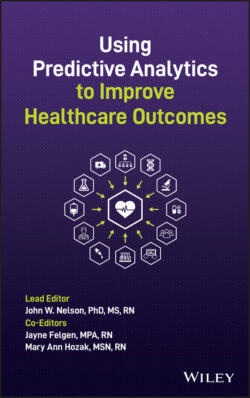Читать книгу Using Predictive Analytics to Improve Healthcare Outcomes - Группа авторов - Страница 25
Step 8: Select an Analytic Method
ОглавлениеThis work will likely be overseen by an in‐house or consultant mathematician, statistician, or data analyst. Consider types of analytics beyond linear methods or qualitative descriptive methods, which are the most common methods currently used in healthcare. For example, if the dataset is very large and complex and it is not clear how to sort the predictor variables in a linear method such as regression analysis, try Pareto mathematics where outliers are examined. Pareto mathematics looks at the highs and lows in the dataset to create a profile of success factors. In his book Where Medicine Went Wrong: Rediscovering the Path to Complexity, Dr. Bruce West asserts that Gaussian mathematics throws out the extreme values despite the fact that these extreme values often provide the most valuable information because they provide a profile of the biggest successes and the biggest failures (2007).
Another type of analysis to consider is constructal theory, a method derived from physics, which is the study of “flow” (Bejan & Zane, 2012). If employees are able to talk about what makes their work flow or what makes their work pause, constructal theory will allow for their comments to be themed and addressed operationally. It is the experience of this author that if employees can talk about their workflow, and data can then be arranged for them in themes, the employees get excited about working on productivity because it is readily apparent to them that the overall aim is figuring out how to do more of what works well and less of what does not. Constructal theory makes productivity, or the lack of it, visible. Gaussian mathematics provides insight into linear processes, while analyses like Parato mathematics and constructal theory provide insight into more dynamic/complex and unknown processes, respectively. Pairing the analytic method with the variable of interest is important to achieving insight into the operations of work and associated outcomes.
The overall aim is figuring out how to do more of what works well and less of what does not.
For your most complex models, you may want to consider using a machine learning problem designed to let the computer tell you the rank order of predictor variables as they relate to your variable of interest. This is suggested on the condition that you never allow the machine to have the “final say.” Machines function without regard for theory and context, so they are not able to tell a story capable of deeply resonating with the people whose work is being measured. It is tempting to be lazy and not do the work of carefully building models based on theory and rich in context that will result in data that makes people excited to take action. More on machine learning can be found in Chapter 6.
